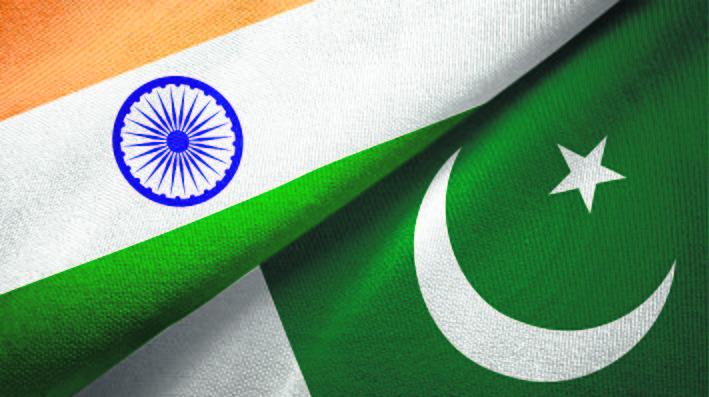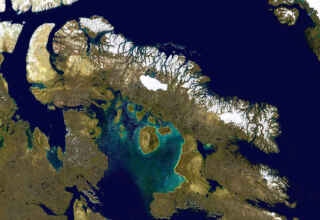
Although the situation in Afghanistan still captures most media attention, the ramifications of the US and NATO withdrawal for the wider neighborhood have only been considered insufficiently. Pakistan may well be the largest winner for now. And when Pakistan is involved in any larger development, attention should be paid to how its most prominent rival, India, reacts. Since Pakistan’s independence from British rule and its formal secession from India in 1947, the relationship between these two states has been mostly characterized by competition. With the end of the Cold War things started to change profoundly. India undertook measures to liberalize its economy, which led to unprecedented economic growth and increases in capital (Pattanaik, 2019).
Not only because of the vast differences in land and population sizes, India is more economically developed and competitive than Pakistan. This includes advantages on the labor market, better education and higher innovativeness, as well as institutional quality and infrastructure; only having also a nuclear weapons arsenal puts Pakistan on a kind of strategic parity with its neighbor (Pattanaik, 2019). Delhi has the predilection to target Pakistan with (especially economic) sanctions (Franke, 2016). Given the conflicted relationship of the two neighboring states, some circles in India believe that closer economic ties with Pakistan could transform the dynamics of the rivalry between the two (Ali, Mujahid & Rehman, 2015). Even the Indian military branch does not in general oppose trade with Pakistan and concentrates on purely military matters. However, state bureaucracies are strong in both states and propagate a zero-sum mentality (ibid.).
On the other side of the border, Pakistani business lobbies would like to see closer economic links to India, except for the agricultural sector; there, they are concerned that their products could not compete with heavily-subsidized agricultural produce from India (Hussain, 2013). For instance, in 2014, Pakistan prevented India from exporting wheat via their neighbor to Afghanistan because Pakistani businessmen were afraid of losing their strong position on the Afghan market to India’s subsidized produce (Khan, 2014).
Nevertheless, examples of a rapprochement between the two can be found. Both countries had signed an agreement to build a gas pipeline in cooperation with Afghanistan and Turkmenistan. In 2012, the Indian and Pakistani ministers of commerce established the Pakistan-India Joint Business Forum allowing business representatives to discuss critical issues and make recommendations to their respective governments. A leading force behind efforts to lobby politicians to lift trade restrictions is the Jindal Group, an international manufacturing giant with businesses in cement, petroleum and steel amongst other sectors. It is part of the Afghan Iron Steel Consortium, which had been awarded a bid to invest in major mines in Afghanistan (Patanaik, 2019).
As India’s economic pre-eminence and strategic location dominate the South Asia region, regional integration depends on Delhi’s choices. In this respect, Pakistan’s geographical location are a limiting factor for India since the former controls the latter’s access to Afghanistan and Central Asia, prospective trading partners. Hence, India’s push for regional economic integration is seen in Pakistan as a means to increase its domineering stance at the expense of the latter, which, in turn, does not want to serve as a transit country for India (Pattanaik, 2019).
Clashing ambitions and regional integration
Whereas India nurtures global power ambitions, Pakistan is concerned to merely limit India’s ascension (Fair, 2014). Therefore, Islamabad has sought to find allies to balance against India. Considering Pakistan’s economic weakness, the China-Pakistan Economic Corridor (CPEC) came as a godsend to Islamabad. The CPEC’s goal is to turn Pakistan as a connector for Central Asian states into a trade hub and expand its port at Gwadar (Rauf, 2021).
In order to circumvent Pakistan, India has invested in the Iranian port of Chabahar to connect to Afghanistan and beyond, and vice versa, to provide an alternative route for Afghanistan’s overseas trade (Pattanaik, 2019). Both ports, Gwadar in Pakistan and Chabahar in Iran, are comparably attractive to Afghanistan and Central Asia in terms of distance. Hence, when Afghanistan’s former government and Iran signed a transit agreement with India, it was regarded as an important step towards increasing Indian trade with Central Asia (ibid.). Here, it should be noted that India’s relations with Iran have been good despite obvious differences. For instance, when Indian President Narendra Modi visited Israel in 2017, Iran’s leadership called out to “the oppresses Muslims” in Kashmir (Times of India, 2017). Or, when international sanctions against Iran made India reduce its oil imports from Iran and diversify its energy sources (Franke, 2016).
Pakistan’s role in Afghanistan also plays into their hand in regard to Central Asia. Any government in Kabul with close ties to Islamabad would present investment and trade opportunities as well as access to Central Asia to the latter. It would also help to – from Islamabad’s point of view – to keep out India; conversely, Delhi’s engagement in Afghanistan aimed to forestall Islamabad’s dominance there and in Central Asia, by providing an alternative transport corridor to the world market. Delhi’s improved relations with Kabul after the fall of the Taliban in 2001 turned Afghanistan into a major route for Indian trade with Central Asia due to Afghanistan joining the SAARC (South Asian Association for Regional Cooperation) and an additional bilateral trade agreement between the two. To safeguard these beneficial developments, India invested $2 billion in aid to mostly Southern Afghanistan – strongly influenced by Pakistan – for education, community-based development projects, humanitarian assistance and infrastructure projects. During former Afghan President Ashraf Ghani’s visit to India in September 2016, the Indian government announced another $1 billion credit line. India’s Afghanistan policies can be placed in its Connect Central Asia Policy which aims at proactive economic and political contact with countries in the region. This policy concentrates on the Turkmenistan-Afghanistan-Pakistan-India pipeline and the reactivation of the North-South Transport Corridor. Furthermore, India seeks to integrate Afghanistan into regional institutional frameworks. Until recently, Delhi advanced its agenda in the wider region due to the conflicted relations between Islamabad and the former government in Kabul as well as the latter’s interest to reduce its trade dependency on the former (Pattanaik, 2019).
After initial suspicion on the objectives of the SAARC, India now appears to be willing to use the association as a means to enhance regional trade and the physical connectivity between the regional states. The decision to accept Afghanistan as a member of the SAARC in 2007 was at least partly motivated by India’s interest in physically connecting with Central Asia via Afghanistan and Pakistan. Meanwhile, Pakistan has been trying to stall regional integration out of fear of improving India’s role in the region; for example, Islamabad refused to sign the SAARC Motor Vehicle Agreement, which would have largely increased the free movement of cargo and people within the region, similar to the Schengen area. Pakistan’s hostile behavior in suchlike fields have led India to opt for other options for sub-regional integration. It started an initiative with Bangladesh, Bhutan and Nepal (the BBIN MVA), which facilitates the free movement of people and goods between the four countries (Pattanaik, 2019). Pakistan’s hostility in economic affairs had been rather detrimental to its regional trade in South Asia where around 90% of its trade occurs with Afghanistan and India (International Trade Centre, 2016). Still, to undermine India’s regional dominance, Pakistan has been promoting China to make a full member of the SAARC, so as to support them in becoming a true geo-economic rival for India in the wider region (Pattanaik, 2019).
India’s investments in Afghanistan under attack
Already before the recent Western withdrawal from Afghanistan, Indian investments there – in particular its transport infrastructure projects as well as people working on them and its Kabul embassy as well as its Kandahar consulate – came under repeated attacks by armed groups housed in Pakistan (Pattanaik, 2019).Other targets include the Salma Dam (Afghan-Indian Friendship dam) in the country’s western Herat Province and a photo-journalist killed in Kandahar while covering the intensifying conflict which was a reason why Indian personnel was evacuated from its Kandahar consulate this year (Salil, 2021). Delhi’s contributions to infrastructure, education, irrigation development and power generation bred warmer ties to Kabul. For instance, the Shahtoot Dam near Kabul is constructed with the help of Indian engineers (Randev, 2021).
On the background of a Taliban regime stronger than in 2001 – according to the Council of Foreign Relations -, the US withdrawal will bring further challenges to India. The American military presence in Afghanistan kept extremist forces in check and created an environment conducive to Indian cooperation with Afghanistan. It is to be feared that a surge in regional and international terrorism and further political instability will lead to upheaval in Kashmir and other parts of India instigated by groups like Laskhar-e-Toiba or Jaish-e-Mohammed (Hasnain, 2021; Randev, 2021). Islamabad may use the changed situation in Afghanistan to increase its influence there and also to alleviate pressures at home over Kashmir by supporting the aforementioned groups via the the Pakistani Secret Service and army. The drone attack on the Indian Airforce Base in Jammu and drone sightings over critical assets on Indian territories may give a hint to the next developments (Salil, 2021). Because of India’s interest and investments in the Iranian port of Chabahar (see above), the US’s crumbling relations with Iran could pose a threat to overall stability in South Asia. The fear of a China-Pakistan-Taliban alliance and an integration of Afghanistan into the Belt and Road Initiative as well as the CPEC could allow China to exploit Afghanistan’s natural resources, estimated to be worth $1 billion, and weaken India’s leverage (ibid.).
Spillover to Jammu and Kashmir
Islamabad could aim to employ four facets to make the situation simmer in Jammu and Kashmir: mass infiltration, terror acts, people’s agitation and influence operations through various means. India’s capability to limit infiltration has received a boost since 2004 with the Line of Control fence and the introduction of modern surveillance technology. It has proved successful, yet mass infiltration attempts through the rough terrain cannot be completely prevented. The effectiveness of successfully infiltrated terror groups is contingent upon the support of overground workers and the availability of finance networks. Indian security elements have a tighter control on these today following more modern counter hybrid conflict strategies. A surge in local recruitment depends on the success of foreign terrorist groups and the penetration of influence operations by Pakistan’s Secret Service. If Pakistan is dependent upon Afghan foreign fighters to rekindle violent confrontation, it is probable to bring about limited violence, however, it could undermine governance and outreach programs in Jammu and Kashmir (Hasnain, 2021).
If peace talks should fail and the Taliban should renege on the terms of the Doha Accord, this would directly threaten India’s political, security, and economic interests in Afghanistan. Hence, to protect its own interests, Delhi needs to reorient its policies towards Afghanistan and deal with the changing dynamics of power shift in the region (Randev, 2021). The prevention of any negative spillover effects into Jammu and Kashmir depends on India’s capability to initiate a range of development and outreach measures, which in such situations is the real challenge. Security may be under control; however, it is non-military measures which have to receive impetus even in the face of fresh challenge (Husnain, 2021).
Western decisionmakers need to take a look at the bigger picture of the region and give support to its allies in the region, above all, India. As unenviable as the momentary conditions in Afghanistan seem, it is no excuse to put one’s head in the sand, ignore the neighborhood, and risk a further deterioration of the political state of affairs in South Asia. For that, the region is too important for geopolitical reasons.
Bibliography
Ali, M., Muhajid, N. & Rehman, A. (2015). Pakistan–India Relations: Peace through
Bilateral Trade. Developing Country Studies, 5(2), 81–88.
Fair, C. (2014). Fighting to the End: The Pakistan Army’s Way of War. Oxford: Oxford
University Press.
Franke, U. E. (2016). Why emerging countries are hedging against the global system. In: M. Leonard (Ed.). Connectivity Wars. ECFR.
Hasnain, S.A. (2020, Mar 12). Afghanistan’s Kashmir fallout: How will likely US withdrawal from Afghanistan impact J&K’s security situation? https://timesofindia.indiatimes.com/blogs/toi-edit-page/afghanistans-kashmir-fallout-how-will-likely-us-withdrawal-from-afghanistan-impact-jks-security-situation/
Hussain, S. T. (2013) ‘Trade in Agriculture with India: View from Pakistan’, India-Pakistan
Trade Newsletter. Available at: http://indiapakistantrade.org/pdf/India-Pakistan-
newsletter_Issue_4.pdf
International Trade Centre (2016). ITC Trade Map. www.trademap.org/Index.aspx
Khan, A. F. (2014, Oct 27). India Seeks Transit Facility for Wheat Export to Afghanistan.
www.dawn.com/news/1140643
Kiani, K. (2010, Jul 19). Afghanistan Allowed to Use Wagah for Export to India: Pakistan-Afghan Accord on Transit Trade. www.dawn.com/news/548084
Pattanaik, S.S. (2019). India, Pakistan and the contest for regional hegemony. In: M. Wigell, S. Scholvin & M. Aaltola (Eds.). Geo-Economics and Power Politics in the 21st Century. New York: Routledge.
Randev, R. (2021, Jul 10). US withdrawal from Afghanistan and its implications for India. https://www.financialexpress.com/defence/us-withdrawal-from-afghanistan-and-its-implications-for-india/2287623/
Rauf, S. (2021). China-Pakistan Economic Corridor. https://www.britannica.com/topic/China-Pakistan-Economic-Corridor
Salil, S. (2021, Jul 29). The Geopolitical Shift in Afghanistan: Security Implications for India. https://www.futuredirections.org.au/publication/the-geopolitical-shift-in-afghanistan-security-implications-for-india/
Times of India (2017, Jul 05). As Modi embraces Israel, Iran’s Ayatollah Khamenei urges support for “oppressed Muslims” of Kashmir. https://economictimes.indiatimes.com/news/politics-and-nation/as-modi-embraces-israel-irans-ayatollah-khamenei-urges-support-for-oppressed-muslims-of-kashmir/articleshow/59455486.cms
By Mahmoud Refaat: The European Institute for International Law and International Relations.















